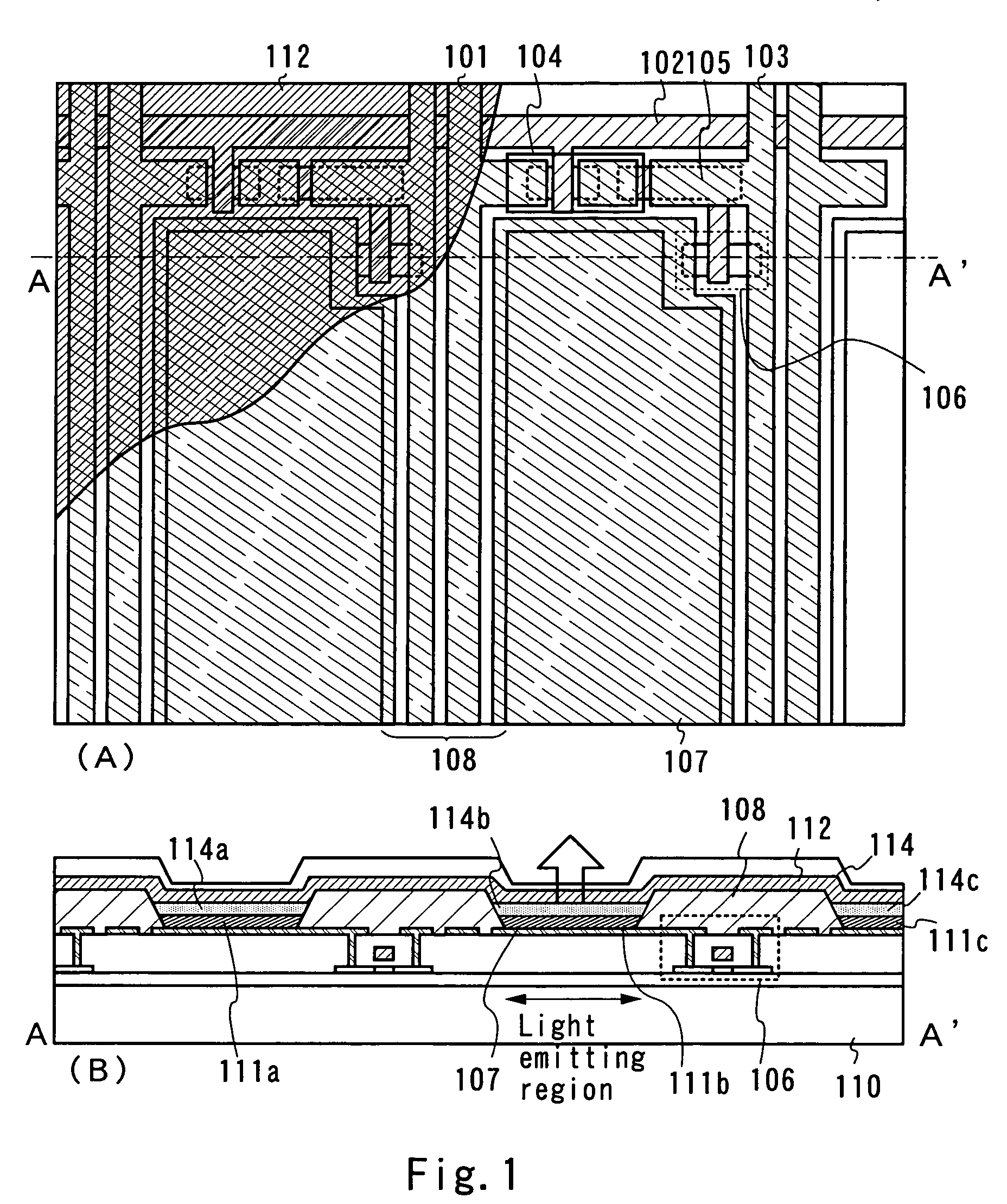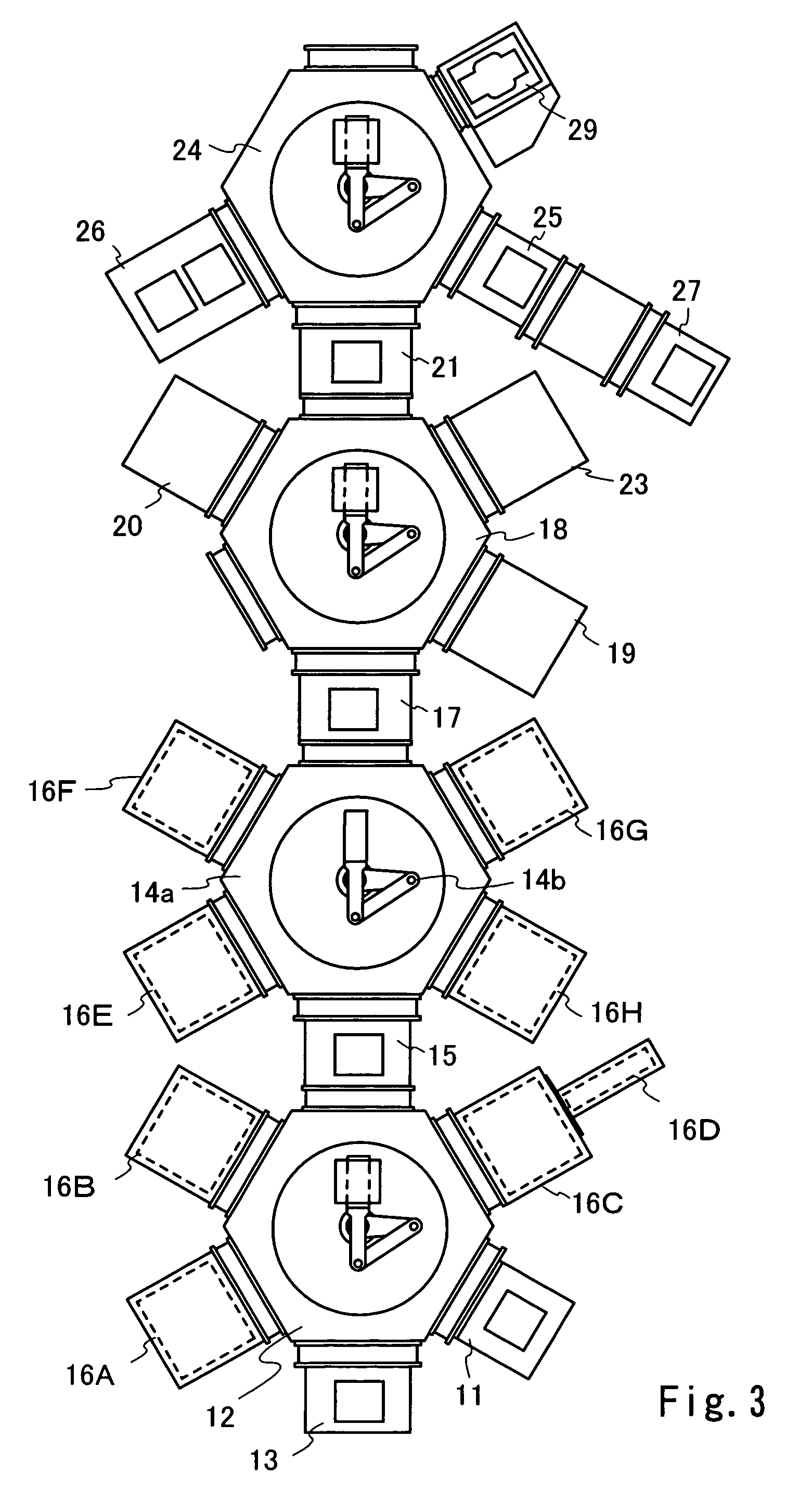Light emitting device and a method of manufacturing thereof
a technology of light emitting devices and manufacturing methods, applied in the field of display devices, can solve the problems of affecting the affecting the appearance of the display device, and generating noise, etc., and achieves the effect of improving the characteristics and reliability of existing el elements, high water repellency, and high oleophilicity
- Summary
- Abstract
- Description
- Claims
- Application Information
AI Technical Summary
Benefits of technology
Problems solved by technology
Method used
Image
Examples
embodiment 1
[0049]In the present embodiment, a structure of the conjugate polymer that is used as a hole injecting material will be shown. A compound shown by the formula (1) is a polythiophene derivative. Substitution groups R1 and R2 may be straight chain or branched alkyl groups having 4 or more carbon atoms, preferably straight chain or branched aliphatic hydrocarbon groups having 4 to 6 carbon atoms, or alicyclic hydrocarbon groups having 4 to 6 carbon atoms in order to impart the solubility to an organic solvent. Alternatively, a benzene ring or a condensed aromatic ring having an aliphatic hydrocarbon group or an alicyclic hydrocarbon group can be also introduced. Furthermore, an electron deficient hetero-aromatic ring such as a pyridine ring or a quinoxaline ring is introduced, and furthermore an aliphatic hydrocarbon group having 4 or more carbon atoms, or an alicyclic hydrocarbon group having 4 to 10 carbon atoms may be introduced into the hetero-aromatic ring. Polymers of these polyt...
embodiment 2
[0058]In the next place, an electron-accepting organic compound that oxidizes a conjugate polymer that is used as the hole injecting material described in embodiment 1, that is, an electron-accepting organic compound as a dopant that is doped in the conjugate polymer will be described. Furthermore, a doping method thereof will be described.
[0059]In formulas (2) through (9), examples of electron-accepting organic compounds that oxidize the conjugate polymer are shown. In order to speedily oxidize a main chain of the conjugate polymer, an unsaturated compound or an aromatic compound having the electron-accepting property can be preferably used. In many cases, when a conjugate polymer is doped, the solubility to an organic solvent high in the polarity is improved. Therefore, it has no need to introduce an alkyl side chain and the like to the electron-accepting organic compound. Furthermore, as the electron-accepting organic compound, a polymer in which an organic compound having one of...
embodiment 3
[0063]In the present embodiment, a method of laminating the respective functional layers on a substrate on which the hole injecting material that is prepared by applying the materials and methods shown in embodiments 1 and 2 is formed will be described.
[0064]As the substrate thereon the ITO is coated, not only quartz and glass but also paper and plastic resins can be used. Furthermore, a substrate on which TFTs are mounted beforehand can be used. At least one layer of hole injecting layer is laminated on the substrate with a hole injecting material that is prepared by adopting the conjugate polymer and the electron-accepting organic compound described in embodiments 1 and 2 and according to the method shown in embodiment 1.
[0065]Thereafter, the respective functional layers are laminated. As the functional layers, a hole transporting layer, a luminescent layer, an electron transporting layer, an electron injecting layer, a hole blocking layer and an electron blocking layer can be cit...
PUM
| Property | Measurement | Unit |
|---|---|---|
| Energy | aaaaa | aaaaa |
Abstract
Description
Claims
Application Information
 Login to View More
Login to View More - R&D
- Intellectual Property
- Life Sciences
- Materials
- Tech Scout
- Unparalleled Data Quality
- Higher Quality Content
- 60% Fewer Hallucinations
Browse by: Latest US Patents, China's latest patents, Technical Efficacy Thesaurus, Application Domain, Technology Topic, Popular Technical Reports.
© 2025 PatSnap. All rights reserved.Legal|Privacy policy|Modern Slavery Act Transparency Statement|Sitemap|About US| Contact US: help@patsnap.com



